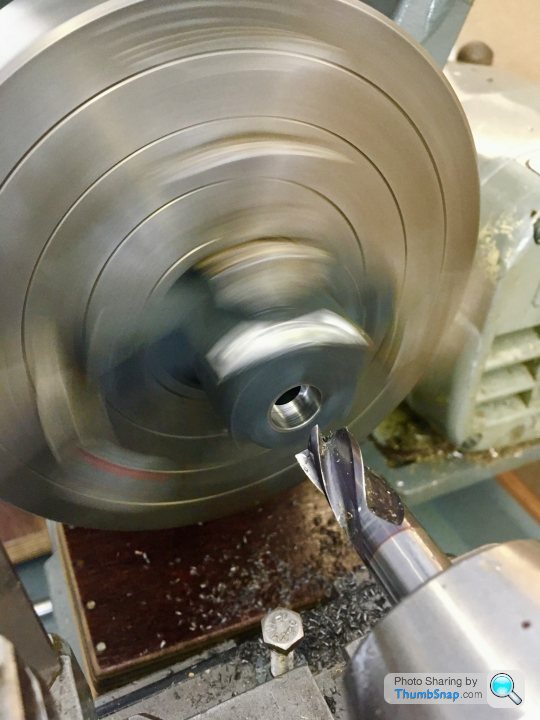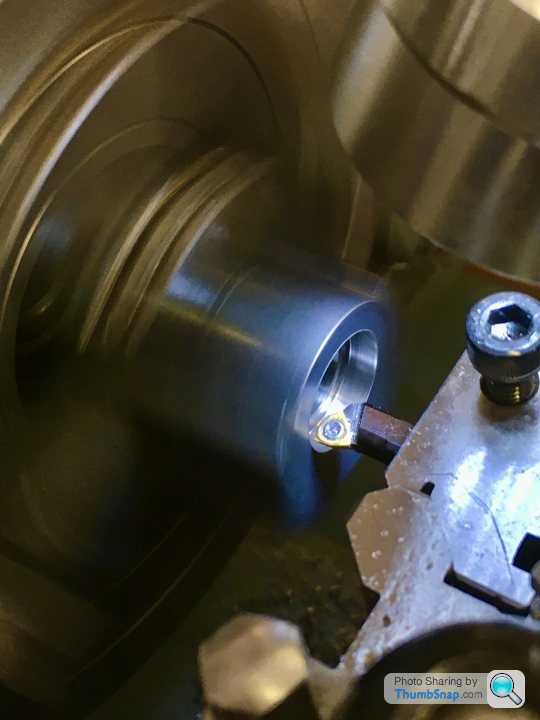Got distracted with some modifications to the mill – I got some thrust bearings and ball races for the x & y hand wheels. As standard they have plain bushes, and metal to metal face contact on the leadscrew ends. The stiction and feel isn’t nice.
So I removed the hand wheel blocks, mounted them in a 4 jaw chuck and milled/bored the bearing pockets. I used my home made centering bar to align the block – I could get it to about 0.00075” but no better for some reason.






Once re-assembled backlash was reduced by about 30%, just by being able to fully tighten the hand wheel nut. The biggest difference is in feel – night and day improvement with no noticeable stiction.
Very happy with that little exercise, especially as it’s the first time I’ve used a 4 jaw chuck. Next the y-axis, then back to motorise the x-axis so I can get more consistent surface finishes.
ETA: It took a lot of trial and error to get to my calculated bearing step depths, cutting a bit, then using the depth gauge on my digital calipers. Even then they were a bit out. I did use my new depth stop, and the fine adjustment screw on the end. I suppose I could calibrate that if I knew the screw pitch, but it's not a great way of doing it. What's the best way of ascertaining depth when blind drilling with the tailstock feed? Mine's got a very rough scale etched onto the tailstock shaft, no good for mm work.
Thanks!
Edited By Dr_GMJN on 27/05/2020 21:20:28
Dr_GMJN.

















